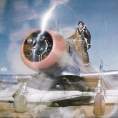Done With LED Nav Lights
-
Members Online
- M20E for me
- skydvrboy
- EricJ
- Ron McBride
- hammdo
- MikeOH
- Supereri73
- fsuflyer
- 1967 427
- Q The Engineer
- amillet
- eman1200
- LANCECASPER
- hubcap
- Raistlin
- M20S Driver
- bluehighwayflyer
- Shortround
- exM20K
- Jake@BevanAviation
- DonMuncy
- PT20J
- gacoon
- IvanP
- jordanjms
- MB65E
- Joe Linnebur
- Mobius708
- jamesyql
- Van Lanier
- ElkoRandy20J
- Johnny U
- Josuev
- johnbkeck
- MooneyMax
- Parker_Woodruff
- Jrock Cain
- 1980Mooney
- Hank
- Matt M
- Grant_Waite
- jetdriven
- Jason 1996 MSE
- bigmo


Recommended Posts
Join the conversation
You can post now and register later. If you have an account, sign in now to post with your account.